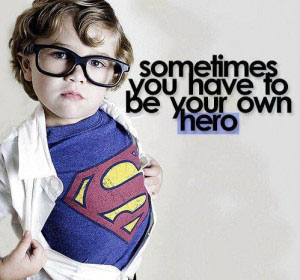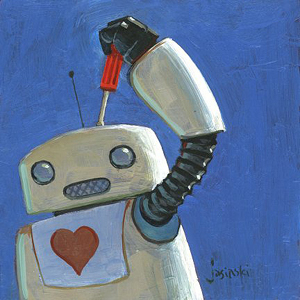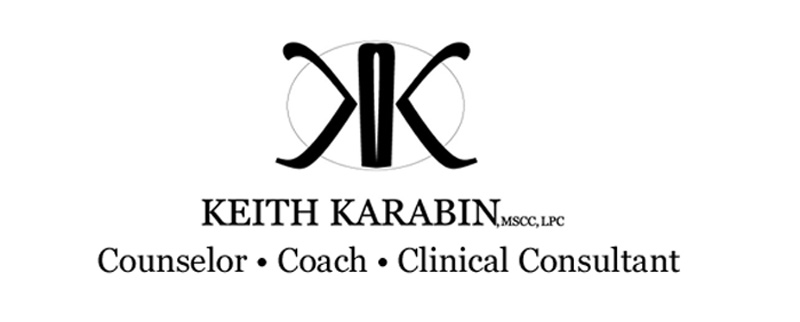Super Self-Helping
“There’s only one corner of the universe you can be certain of improving,
and that’s your own self.”
-Aldous Huxley, Author
You come here for many reasons; a laugh, a bright spot, a validation…maybe some crazy few come for a challenge. But it became clear during the site review that you come to this site, and are increasingly coming, as seekers on the path to wellness and understanding. As the dreaded self-helpers. I am one, too. And we are not alone.
 “At the start of the 21st century, ‘the self-improvement industry [was] said to constitute a 2.48-billion dollars-a-year industry’ in the United States alone. By 2006, research firm Marketdata estimated the ‘self-improvement’ market in the U.S. as worth more than $9 billion” which is not a small amount of people. Marketdata can’t even track all of the websites, like this one, that offer free self-help, or as we call it “DIY Psychotherapy.”
“At the start of the 21st century, ‘the self-improvement industry [was] said to constitute a 2.48-billion dollars-a-year industry’ in the United States alone. By 2006, research firm Marketdata estimated the ‘self-improvement’ market in the U.S. as worth more than $9 billion” which is not a small amount of people. Marketdata can’t even track all of the websites, like this one, that offer free self-help, or as we call it “DIY Psychotherapy.”
Though boosted by the internet, self-help is not a modern invention. In fact, it was first the title of Scottsman Samuel Smiles’s book in 1859, who is considered the “great-grandfather of the modern movement,” and perhaps the first Self Help Guru (Schulz, 2013). America was only around 80 years old then. Over 150 years later and the movement is everywhere. But Smiles did not create it, he only named a phenomena that I believe is as old as people. But what is it, why does it work and how can we do it best?
Super Self Help Never Sleeps
“The mind gives an order to the body and is at once obeyed,
but when it gives an order to itself, it is resisted.”
-Saint Augustine, Confessions, Fourth Century A.D.
 The “master theory” of self-help “is fundamentally dualist,” according to journalist Kathryn Schulz, “It posits, at a minimum, two selves: one that needs a kick in the ass and one that is capable of kicking.*” Mrs. Schulz examined if and why self-help helps in an open discussion of her struggle with depression. I encourage you to click and read it, she’s a thoughtful writer with a profound turn-of-phrase. She found that though “It isn’t consistent, it isn’t predictable, and God knows it isn’t easy—and yet somehow, sometimes, we do manage to change. The self really can help itself.” (2013) Through the article, though, she consistently noted that everyone from psychological, medical or spiritual perspectives struggled with the “why” it works.
The “master theory” of self-help “is fundamentally dualist,” according to journalist Kathryn Schulz, “It posits, at a minimum, two selves: one that needs a kick in the ass and one that is capable of kicking.*” Mrs. Schulz examined if and why self-help helps in an open discussion of her struggle with depression. I encourage you to click and read it, she’s a thoughtful writer with a profound turn-of-phrase. She found that though “It isn’t consistent, it isn’t predictable, and God knows it isn’t easy—and yet somehow, sometimes, we do manage to change. The self really can help itself.” (2013) Through the article, though, she consistently noted that everyone from psychological, medical or spiritual perspectives struggled with the “why” it works.
To me, they all miss the obvious. It works because there’s no other option, and that is empowering. “Somewhere below or above or beyond the part of you that is struggling with weight loss or procrastination or whatever your particular problem might be, there is another part of you that is immune to that problem and capable of solving it for the rest of you,” Schulz says, and I say that’s awesome, natural and a gift. You are your own super hero and you were built to save yourself.
People, at best, are self-solving machines. No psychotherapy can work if the client isn’t the one working, no doctor can heal if you stay sick on the couch, no dryer can work without clunking if we don’t scratch our chins, acknowledge the problem and—in 2014—Google the heck out of it.
This is just as true with anything we see as a problem behavior. The difference, as put by Dr. Marc F. Kern, is that “…behavior change does not happen in one step. Rather, people tend to progress through different stages on their way to successful change” and at their own pace.
The Stages of Super
“Know where to find the information and how to use it – that’s the secret of success.”
-Albert Einstein, Patent Clerk
The Stages of Change Model, as I noted in New Year’s Revolution was developed by James Prochaska and Carlo DiClemente as they studied how people quit smoking. Since publishing their work, Prochaska and DiClemente’s “SCM model has been applied to a broad range of behaviors,” Dr. Kern wrote, “including weight loss, injury prevention, overcoming alcohol, and drug problems among others.” (Kern, 2012)
We go through these six stages when we change anything, but it happens as a slower process depending on the size of what we seek to change. Check out New Year’s Revolution if you want details, but here’s the brief description for the sake of today’s issue.
- Pre-Contemplation: “There’s no problem.”

- Contemplation: “Wait, is there a problem?” If that answer is “Oh, yeah…”
- Preparation: “Ok, how do I solve this thing?”
- Action: “I know how, now let’s do it!”
- Maintenance: “Look, Ma, no hands! I can do it!”
The “why” self-help works is also the key doing it best: Self-help is happening at every one of these stages, especially on the internet. We’re quietly reading up on if we have a problem and how to solve it. We’re bookmarking sites, believing that oh no we don’t have a problem, then returning sheepishly to them at a later point (Pre-Contemplation moving into to Contemplation) and checking again.
Where self-help can be undermined is over-focusing on the “action” stage, believing this process is all about the doing when really Action is “the shortest of all the stages.” As a psychotherapist I do place high value on those action moments with my clients, but they are less important than the moments they accomplish themselves between sessions. Out in the world is the full process of change. Self-help nurtures this process of change, including the dreaded secret sixth stage…Relapse. While we don’t like to mention it, “along the way to permanent cessation or stable reduction of a bad habit…it is much more common to have at least one relapse than not.” Self-help, especially internet self-help, excels in turning a relapse into a wiser return to the change process. Forums, blogs and online support groups rock this house. (Kern, 2012)
Dr. Kern says that people who successfully move through the stages of change “remain aware that what they are striving for is personally worthwhile and meaningful. They are patient with themselves and recognize that it often takes a while to let go of old behavior patterns and practice new ones until they are second nature to them. Even though they may have thoughts of returning to their old bad habits, they resist the temptation and stay on track” (Kern, 2012). By this point it’s obvious to see how internet self-help can be a solid support through all of that.
Inspired? Perfect! Not sure where to start? “Try something,” says Schulz (2013). “Better still, try everything—throw all the options at the occluding wall of the self and see what sticks,” That’s what internet self-help, or DIY Psychotherapy is all about. Start now, please start on this website if you choose, but start. The whole internet and a better life await.
**And SUPER CONGRATULATIONS to Kimberly Dumbrowski, winner of the Spring Gift Card Subscription Sweepstakes! Kim, just send me and email and I’ll forward along the card, good for $10 at Gap, Old Navy or Piperlime.com.
For the rest of y’all, don’t worry, there’s another sweepstakes in the Fall. SUPER THANKS to all of you who signed up these past two seasons–you’re what it’s all about.
__________________________________________________
* I was as delighted as you to find that Mrs. Schulz and I share the same awesome terminology as I used in How to Kick Your Own Ass.
Kern, Marc. (2012) The Stages of Change Model. Addictioninfo.org. Retrieved from: http://www.addictioninfo.org/articles/11/1/Stages-of-Change-Model/Page1.html
Schulz, Kathryn. (2013) The Self in Self-Help: We have no idea what a self is. So how can we fix it? New Yorker. Retrieved from: http://nymag.com/health/self-help/2013/schulz-self-searching/


